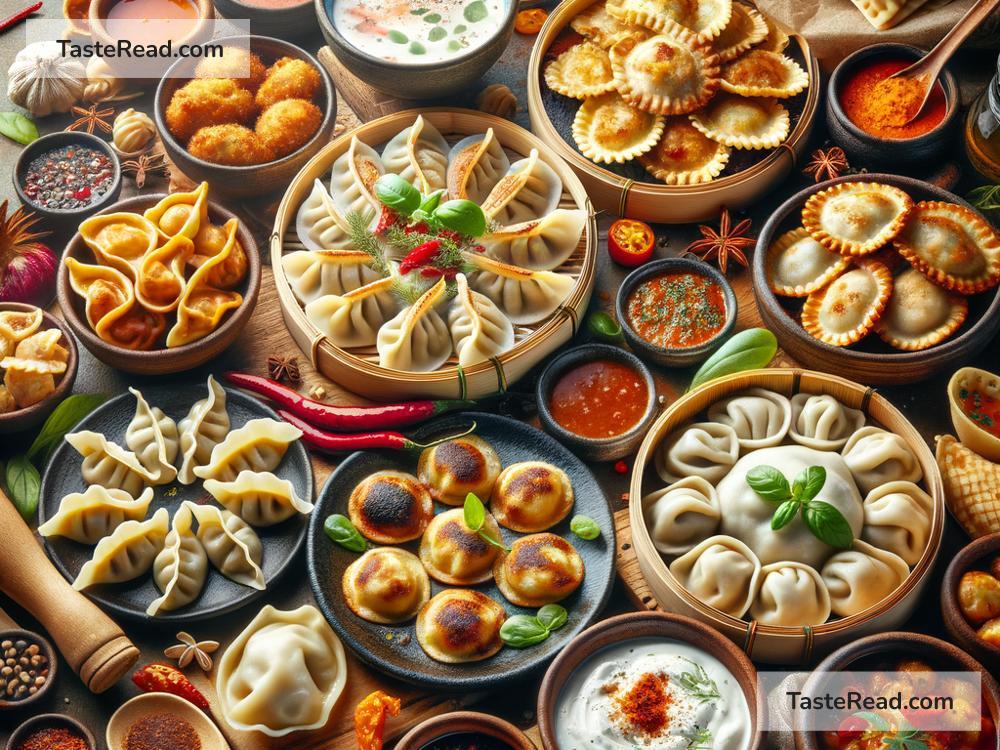Dumplings Around the World: A Delicious Journey of Cultural Flavors
Dumplings are an iconic food that bring joy to people around the world. They come in many shapes, sizes, and flavors, reflecting the culture and traditions of the places where they are made. From steamed to fried, savory to sweet, dumplings have been a staple in the kitchens of many countries. Let’s explore some of the most famous dumplings and discover how they connect cultures through taste and creativity.
What Are Dumplings?
At their core, dumplings are pieces of dough that often have a filling inside. The dough can be made from flour, water, or other ingredients, and the fillings vary widely—from meat and vegetables to cheese or dessert-like ingredients. Depending on the culture, dumplings can be boiled, steamed, fried, or baked, making them a versatile dish that fits many culinary traditions.
Gyoza: Japan’s Crispy Delight
In Japan, dumplings are often called gyoza. These dumplings are inspired by Chinese potstickers but have a unique Japanese twist. Gyoza are typically filled with ground pork, cabbage, garlic, and ginger, giving them a bold and savory flavor. They are pan-fried until crispy on one side, then steamed to make them tender. This combination of textures—crispy and soft—makes gyoza irresistible.
Gyoza are commonly eaten as a side dish or snack. You’ll often find them served with dipping sauce made of soy sauce, vinegar, and chili oil. Whether enjoyed at home or in a Japanese restaurant, gyoza have won hearts worldwide.
Manti: Tiny Treasures of Central Asia
In Central Asia, particularly in countries like Turkey, Uzbekistan, and Kazakhstan, dumplings called manti take center stage. These small, delicate dumplings are usually filled with spiced lamb, beef, or vegetables. The dough is thin and almost transparent, showing off the filling inside.
Manti can be boiled, steamed, or baked, depending on the region. In Turkey, manti is often served with yogurt, garlic, and paprika, creating a creamy and tangy dish. In Uzbekistan, they might come with butter or sour cream. Despite their small size, manti pack a punch of flavor and are a beloved dish at family gatherings.
Ravioli: Italy’s Pasta-Dumpling Hybrid
Italy’s version of dumplings is the famous ravioli. Technically, ravioli are more like stuffed pasta, but they share similarities with dumplings. They consist of thin squares (or rounds) of pasta dough folded over a filling, which can include cheese, meat, spinach, or herbs.
Ravioli are usually boiled and served with a rich sauce, like marinara or cream sauce. One of the most traditional ravioli recipes is filled with ricotta cheese and spinach, topped with freshly grated Parmesan. Italians embrace ravioli as a comforting dish that brings families together around the dinner table.
Pierogi: Poland’s Comfort Food
Pierogi are Poland’s beloved dumplings. These hearty treats are made by wrapping dough around fillings like potatoes, cheese, meat, mushrooms, or even fruit. Pierogi can be savory or sweet, making them perfect for any occasion.
After being boiled, pierogi are often pan-fried in butter to give them a golden, crispy edge. They are traditionally served with sour cream or fried onions, enhancing their flavor. Pierogi are deeply rooted in Polish culture, enjoyed during holidays, family celebrations, and everyday meals.
Baozi: China’s Fluffy Buns
China is home to many types of dumplings, but baozi stand out for their unique texture and appearance. Baozi are steamed buns made from soft, fluffy dough filled with a variety of ingredients, such as pork, beef, vegetables, or sweet bean paste.
Baozi can be small or large, and they are popular street food in China. They are often enjoyed for breakfast with tea or as a snack throughout the day. With their cloud-like exterior and tasty fillings, baozi offer a comforting bite for anyone.
Empanadas: Latin American Dumplings
In Latin America, dumpling-like foods appear as empanadas, though they are often baked or fried rather than steamed. Empanadas are made by folding dough over fillings such as seasoned meats, cheese, beans, or fruit, then sealing the edges.
Empanadas can be savory or sweet, offering something for everyone. They are especially popular as street food and are ideal for eating on the go. Countries like Argentina, Chile, and Colombia each have their own variations, making empanadas a delicious way to explore the flavors of Latin America.
Modak: India’s Sweet Dumpling
In India, dumplings are not just savory—they can also be sweet! Modak is a dumpling made during festivals like Ganesh Chaturthi. It is filled with coconut and jaggery (a type of sugar) and covered with soft rice flour dough. Modak is usually steamed, but fried versions also exist.
This Indian dumpling has spiritual significance, as it is offered to Lord Ganesha during prayers. Modak is a beloved treat that ties together food and tradition in a unique way.
Conclusion: A Universal Love for Dumplings
Dumplings are more than just food—they are a reflection of culture and history. Whether you’re eating gyoza in Japan, manti in Turkey, or pierogi in Poland, dumplings remind us of the creativity and care that go into making delicious meals. They bring people together, offering comfort and joy with every bite. So, next time you take a dumpling journey around the world, remember that they are a symbol of cultural connection—and an opportunity to taste the world’s diversity!


